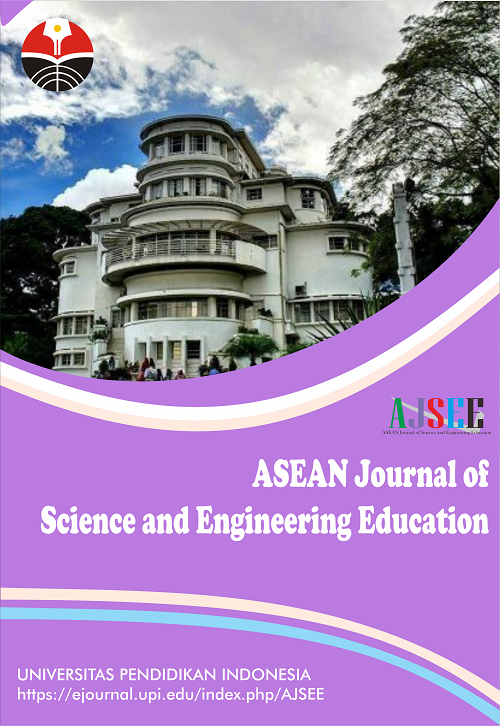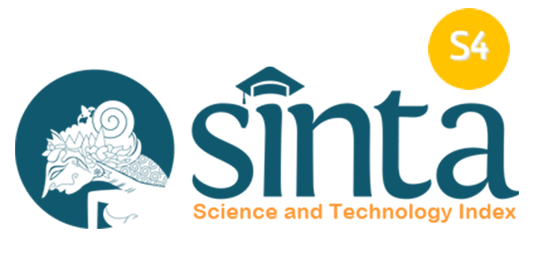Barriers Limiting the Use of Google Classroom for Learning Vocational and Entrepreneurship Courses
Abstract
The dream of every undergraduate is to get a fascinated well-paid Job after school. One of the courses that could aid students’ employment is the vocational and entrepreneurship courses. Due to the high number of students who partake in this course, some technologies were employed for the instructional process. One of such is the Google classroom. However, there are some complains from students on these learning technological platforms. This study therefore investigates the barriers limiting the use of google classroom for learning vocational and entrepreneurship courses. This study employs the survey method, and 250 undergraduates were purposively sampled. The findings established that Poor power supply, loss of class control, High cost of purchasing relevant materials, Lack of adequate support system and laziness encouragement are barriers that hinder students’ use of google classroom for learning vocational and entrepreneurship courses. The study concluded that some barriers which hinders students from using Google classroom for learning should be resolved. It was however recommended that the use of google classroom should be encouraged in schools, not only for learning vocational and entrepreneurship courses but for other courses.
Keywords
Full Text:
PDFReferences
Akinola, D. B. (2012). A survey of entrepreneurship education curriculum as an instrument for reducing unemployment in Nigerian universities. Abuja International Journal of Education and Management Sciences (ABIJEMS), 2, 330-345.
Atsumbe, B. N., Raymond, E., and Duhu, E. E. P. (2012). Availability and utilization of e-learning infrastructures in Federal University of Technology, Minna. E-learning, 3(13), 56-64.
Belaya, V. (2018). The use of e-learning in vocational education and training (vet): systematization of existing theoretical Approaches. Journal of Education and Learning, 7(5), 92-101.
Bhattacharjee, B. (2008). Factors affecting computer use among older adult users: A study in the backdrop of the Florida State University. PhD Thesis, College of Information, the Florida State University.
Brimah, A. N., Olanipekun, W. D., and Ibikunle, O. H. (2014). Engendering Entrepreneurship Education Curriculum as a Catalyst for solving unemployment and achieving Sustainable Development. Al-Hikmah University Journal of Education, 1(1), 14-21.
Chuang, Y. T. (2014). Increasing learning motivation and student engagement through the technology-supported learning environment. Creative Education, 5(23), 1969.
Ertmer, P. A., Ottenbreit-Leftwich, A. T., Sadik, O., Sendurur, E., and Sendurur, P. (2012). Teacher beliefs and technology integration practices: A critical relationship. Computers and education, 59(2), 423-435.
Ezeugbo, C. O., and Asiegbu, E. C. (2011). Challenges in the application of e-learning in continuing Education Programmes (CEP) in Nigerian Universities: Exploring teachers’ perspective. Ghana Journal of Education and Teaching (GHAJET), 12, 267-275.
Islahi, F. (2019). Exploring teacher attitude towards information technology with a gender perspective. Contemporary educational technology, 10(1), 37-54.
Islam, M. S., and Islam, M. N. (2017). Use of ICT in libraries: An empirical study of selected libraries in Bangladesh. Library Philosophy and Practice.
Izenstark, A., and Leahy, K. L. (2015). Google classroom for librarians: features and opportunities. Library Hi Tech News, 32(9), 1-3.
Jamieson-Proctor, R., Albion, P., Finger, G., Cavanagh, R., Fitzgerald, R., Bond, T., and Grimbeek, P. (2013). Development of the TTF TPACK survey instrument. Australian Educational Computing Journal 27(3), 26-35.
Kerres, M. (2012). Mediendidaktikkonzeption und entwicklung mediengestützter lernangebote, 3. Vollständig überarbeitete auflage. München: Oldenbourg Verlag.
Lenz, K. (2009). Akzeptanz von E-Learning in KMU. Universität Erfurt, Dissertation.
Mahdum, M., Hadriana, H., and Safriyanti, M. (2019). Exploring teacher perceptions and motivations to ict use in learning activities in Indonesia. Journal of Information Technology Education, 18(2019), 293-317.
Mathipa, E. R., and Mukhari, S. (2014). Teacher factors influencing the use of ICT in teaching and learning in South African urban schools. Mediterranean Journal of Social Sciences, 5(23), 1213-1213.
Mwila, P. (2018). Assessing the attitudes of secondary school teachers towards the integration of ICT in the teaching process in Kilimanjaro, Tanzania. International Journal of Education and Development using Information and Communication Technology, 14(3), 223-238.
Nwana, S. (2012). Challenges in the application of e-learning by secondary school teachers in Anambra state, Nigeria. African Journal of Teacher Education (AJOTE), 2(1), 1-9.
Okmawati, M. (2020). The use of Google Classroom during pandemic. Journal of English Language Teaching, 9(2), 438-443.
Olanipekun, W. D., Brimah, A. N., and Rabiu, R. O. (2015). Entrepreneurial and vocational education revolution: A catalyst for sustainable development. Kuwait Chapter of Arabian Journal of Business and Management Review, 33(2587), 1-9.
Osuafor, A. M., and Emeji, E. O. (2015). Utilization of E-Learning facilities by science teacher educators for teaching pre-service teachers in Nigerian Colleges of Education. Asian Journal of Education and E-learning, 3(2), 160-167.
Rahmad, R., Wirda, M. A., Berutu, N., Lumbantoruan, and Walbiden. (2019). Google classroom implementation in Indonesian higher education. Journal of Physics, 1175(1), 012153.
Sitzmann, D. (2015). Rahmenwerk für zielgruppenorientiertes Blended E-Learning im MINT-Bereich im Kontext des Lebenslangen Lernens. Technische Universität Clausthal, Dissertation.
Suri, G., and Sharma, S. (2013). The impact of gender on attitude towards computer technology and e-learning: An exploratory study of Punjab University, India. International Journal of Engineering Research, 2(2), 132-136.
Türel, Y. K., and Johnson, T. E. (2012). Teachers' belief and use of interactive whiteboards for teaching and learning. Journal of Educational Technology and Society, 15(1), 381-394.
Warschauer, M., Zheng, B., Niiya, M., Cotten, S., and Farkas, G. (2014). Balancing the one-to-one equation: Equity and access in three laptop programs. Equity and Excellence in Education, 47(1), 46-62.
Yacob, A., Kadir, A. Z. A., Zainudin, O., and Zurairah, A. (2012). Student awareness towards e-learning in education. Procedia-Social and Behavioral Sciences, 67(2012), 93-101.
Yang, K. T., and Wang, T. H. (2012). Interactive whiteboard: Effective interactive teaching strategy designs for biology teaching. E-Learning-Engineering, On-Job Training and Interactive Teaching, 139-156.
Zabadi, A. M., and Al-Alawi, A. H. (2016). University students’ attitudes towards e-learning: University of Business and Technology (UBT)-Saudi Arabia-Jeddah: A Case Study. International Journal of Business and Management 11(6), 286-295.
DOI: https://doi.org/10.17509/ajsee.v2i1.37573
Refbacks
- There are currently no refbacks.
Copyright (c) 1970 Universitas Pendidikan Indonesia

This work is licensed under a Creative Commons Attribution-ShareAlike 4.0 International License.














